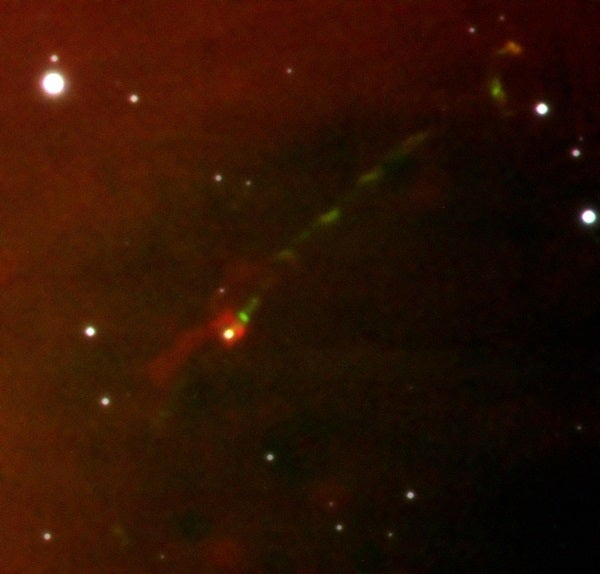Mayrit 1701117 is one of the newest examples of a young brown dwarf exhibiting a jet. In fact, it is so early in the process of forming that it is really a “proto” brown dwarf, with plenty of accretion from its surroundings left to undergo. While a lot of the details about these jets are still being studied, we do know that they are driven by rotating magnetic fields in the young brown dwarf. These magnetic fields sweep up material from the gas accreting into the brown dwarf and drive some of it toward the poles, where it ends up being ejected as a jet. Note these jets can be quite large, often several parsecs! (One parsec is 3.26 light-years.)
When these jets impact other gas along their path, they can excite it and become detectable on images or via spectroscopy, allowing us to study properties of the jet itself as well as the nearby gas.










